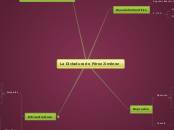DESARROLLO Y APRENDIZAJE DE LA ESCRITURA EN LOS NIÑOS(AS)
To name your story, you have to think about the overall message and what you want your audience to understand from the story. Also, make it relevant and easy to remember.
HIPOTESIS
The ending of a story is essential. We all know that if the ending is weak, what happened before loses its importance. So make it unpredictable, but fair. A resolved ending answers all the questions and ties up any loose threads from the plot.
Entienden que hay reglas que dirige la escritura
This is the moment when the main character surpasses the last obstacle and finally faces their greatest challenge.
The climax usually follows one of these patterns:
- realization
- resolution
- choice
Type in your answer.
Plural y Singular
Cuando la palabra es singular la simboliza con un determinado numero de grafías.
Cantidad
Piensan que las palabras de dos o tres letras no se pueden leer y son escritas pegadas
NIVEL
The middle of the story is where you add layers of complications that will lead to the end. Reveal more about the character's journey. Did their personality go through changes? How did they overcome the challenges? And as you build up the story’s central conflict, make it more personal to that character. Also, from the middle act, you have to lead into the final act.
NIVEL 3 EDAD (5-6 AÑOS) Hipótesis silábico alfabético.
There wouldn't be any tension and excitement in your story if there weren't any obstacles in your character's way.
Relacion entre los aspectos sonoros y gráficos de la escritura
A story is nothing more than a character overcoming a series of difficulties to reach the desired goal. Obstacles usually create suspense and conflict. In overcoming obstacles, there is growth: weak becomes strong; hatred turns into love; sadness into happiness; wrong into right; lies into truth; or evil becomes good.
See a few examples below:
- stopping a meteor
- finding a killer
- finding love
MODOS EVOLUTIVOS
SILABICO-ALFABETICO
Una letra para cada silaba y para cada sonido
HIPOTESIS SILABICA
Una letra para representar cada silaba
NIVEL 2 EDAD (4-5 AÑOS) exigencias cuantitativas y cualitativas
Your character(s) need(s) motivation in order to solve the challenge(s).
CUANTITATIVA
Secondary characters might also have motives that lead them to cross paths with the main character or which might trigger them to help the main character.
Al escribir lo hace con grafías, palitos, líneas o curvas
No establece control semiletras o letras
CUALITATIVA
Why does your character need to confront this challenge? What does he/she expect to accomplish by solving it?
See a few examples:
- will marry in 3 days
- can fix the mistakes of the past
Motivation
Tener como mínimo una palabra
NIVEL 1 EDAD (3-4 AÑOS) arbitrariedad, linealidad continua o descontinua.
Each story has a main character and that character usually needs to solve a problem or challenge. The character's challenge is the one that creates tension throughout the story.
Busca criterios para distinguir en dos representaciones graficas, dibujo escritura.
Lee imágenes, reconoce las letras pero no pasa de eso
No discrimina entre escribir y dibujar
Type in any other challenges which other characters in the story need to face.
El niño no sabe que la escritura tiene significado
In most stories, there are 3 challenges. The number 3 is a mystical number symbolizing completeness. Try to come up with interesting challenges with which your character needs to struggle.
See a few examples below:
- turns into a werewolf at night
- is sent back in time
ETAPAS
Incorporacion de las pautas naturales y cambios del lenguaje
In the beginning of the story (or the exposition), you will need to introduce the setting and characters. You might also want to introduce the main conflict. This part of the story is important because it gives the reader necessary background information and maybe even a first insight into a character’s personality.
ETAPA FINAL ALFABETICA
Comprensión del sistema y las reglas de reproducción
SILABICA ALFABETICA EDAD (5-6 AÑOS)
The setting (time & place) of a story can change throughout the plot.
Repite silabas y junta letras
Intenta corresponder a cada grupo de letras el nombre de cada objeto
SILABICA EDAD (4-5 AÑOS)
Textos sin imágenes siguen siendo letras
Legibilidad e interpretabilidad
PRESILABICA EDAD (3-4 AÑOS)
Characters are essential to a good story. Usually, the protagonist(s) is/are the most affected by the plot. Introduce a character by focusing on their actions, interests, and occupation, as the physical appearance doesn't make a difference in most cases.
Generaliza las letras y los numeros
Denominan letras a los textos
Type in the name of your character.










